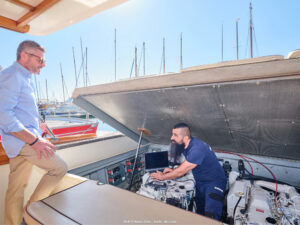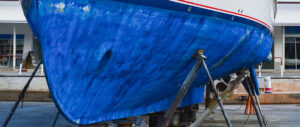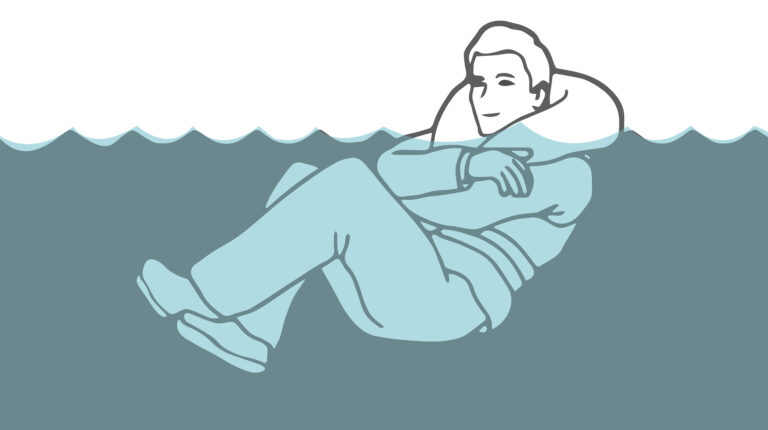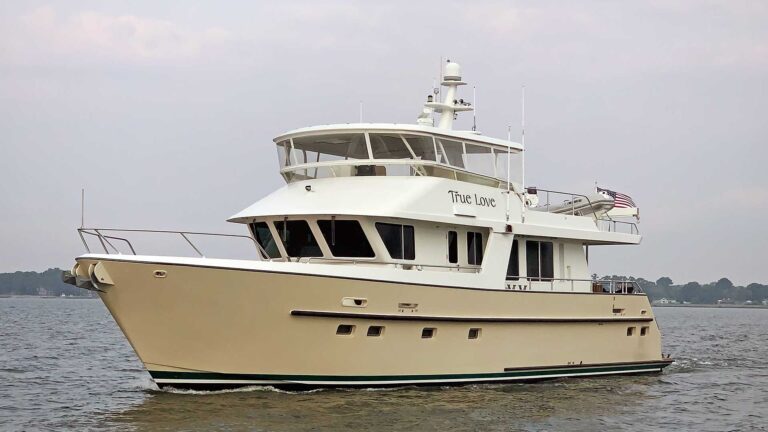
There are objects floating at sea other than us and our beloved boats. Some are interesting, some are just plain garbage, and some are potentially dangerous.
In the Pacific Northwest, thousands of miles of shoreline and rivers feed into Puget Sound, as well as the waters around the San Juan Islands and the southern Canadian Gulf Islands. Those rivers disperse a wide array of objects into the cruising waters, and the miles of shoreline provide another source of foreign floating items.
If you spend enough time on the water, eventually you see it all out there. The lone basketball shoe, which causes me to ponder how someone loses just one shoe. I have yet to find a matching pair. There are boat cushions, apparently not properly secured, that blow overboard. Sometimes, an oar or paddle floats listlessly along, maybe inadvertently left in the dinghy being towed behind the mothership. Sometimes, we don’t need to buy beer before heading out for cruise; I have found a can or two bobbing in the water (unopened, no less). Maybe the beer just wasn’t very good, and the owner tossed it in disdain.
Tires, barrels, buoys, fenders, plastics, hats, shirts and sundry other garbage all ends up in the sea. When it’s safe to do so, I try to swing by and retrieve the item, later disposing of it in a manner more proper.
Most of the items we come across present little threat of appreciable harm to our boats. But, alas, there is at least one floating object that is sourced from nature and presents a more insidious threat: the deadhead.
The deadhead is easy to miss and often dangerous. More than a few hulls, propellers and running-gear components have lost the fight to the dreaded deadhead.
I have not taken the time to consult Merriam-Webster or Chapman for a proper definition of a deadhead, but will instead offer my own rudimentary definition. A deadhead is a log that’s been swept to sea, become waterlogged and commenced the slow process of sinking. While floating for months or years on end, it has also become home to sea life—seaweed, barnacles, kelp—that further weighs on it. Before sinking to the depths, the log spends its remaining days mostly submerged, often dipping in and out of sight in the water.
It’s in this transition from floating to sitting on the seafloor that the deadhead presents its danger. Striking a deadhead even at slow speed can damage hull and propeller alike. At higher speed, or with a larger deadhead, it can breach the hull.
Deadheads are found anywhere there is navigable water. There seem to be fewer deadheads in the open ocean, but likely that’s because of the vastness of the oceans. More often, deadheads are encountered in coastal waters, often near locations where rivers feed into the sea and there is ample shoreline. During periods of higher-than-normal rain, or inland flooding, trees are tugged loose and begin the river ride to open water. In other instances, trees harvested for commercial purposes escape their log boom and end up floating free. Regardless, once the tree is no longer upright, in my simple mind it becomes a log.
Once the logs are in our cruising grounds, tidal action moves them from here to there. Maybe they spend some time on shore, only later to be pulled back to sea on a large high tide. Other times, nature permits the logs to float endlessly in a particular body of water, never traveling too far on either an ebb or a flood tide. Depending on the species, the log will float on the surface for a time, easily visible to passing watercraft. As the months turn to years, slowly the log succumbs to nature, sinking little by little.
No boat under this pilot’s control has yet to strike a deadhead, but I’ve come close.
Once while I was cruising in my 30-foot Wellcraft, a deadhead appeared in the distance. It was of the variety that I call a root-ball deadhead: a tree, now log, that still has its trunk and root system attached. I was cruising at about 25 knots, the water was flat, the weather was sunny and clear. Having some experience in sighting deadheads, I estimated the general length of this particular one, nearly all of which was beneath the surface. It presented at more of a horizontal than vertical angle. It was on my port side, and I thought I had given a sufficiently wide berth to pass safely.
Upon reaching the deadhead, I ascertained that the portion about 2 feet below the water extended quite some distance. Farther than I had estimated. Fortunately, quick evasive action prevented my drive units from hitting it, but it was close, and the sharp turn at speed was a bit startling to my passengers.
I encountered a different species of deadhead years earlier while aboard my grandparents’ 42-foot trawler, somewhere out in Rosario Strait. This was a deadhead of the bobber variety. As the name suggests, it submerges below the surface with wave action, only to surface some moments later. We spotted it off in the distance floating with maybe 2 feet of log above the surface, nearly perpendicular to the water’s surface. With the wave action, it would submerge only to resurface at an unspecified time and unpredictable location.
My grandfather and I both spotted the bobber—we were traveling slowly, this being a trawler and all. A course change was made, albeit slight, and the bobber surfaced about 20 yards off the bow. I placed the engine in neutral as instructed, and we both sat in silence as we coasted by the spot where we thought it would reappear. It instead tried to resurface beneath the boat, and we heard two pronounced thuds as it bounced against the hull. Looking to the stern, we saw it pass, surfacing maybe 5 yards behind us. If we had hit that deadhead at even 7 knots, or if the propeller had been turning, damage would have likely ensued.
A few years ago, I was docked at Fisherman Bay on Lopez Island for the July Fourth holiday. It was a grand and festive morning, and I walked the dock in search of an overpriced ice cream product for the kids. Soon, I came across of group of fellow boaters glowering into the water, arms crossed.
They were watching a commercial diver work on removing a propeller from a rather large and expensive vessel; the captain was taking no pleasure in the happenings. It seems he was uncertain of what exactly he had hit, though he was certain that after striking the object, an appreciable vibration emanated from his engine room. Lucky enough to have two engines, and with the damaged one shut down, he had made way to his assigned slip the previous evening.
Discussion ensued among the salty spectators, and it was decided that most likely, he had hit a deadhead while under power. The significantly bent propeller that emerged with the diver seemed to confirm the finding.
Dodging the Dread
With some discernment, it is easy to construct a few tips and tricks to avoid the deadhead altogether, especially the potential aftermath of a strike.
• Scan the water as you are cruising, keeping vision off the bow in measure to the vessel’s speed. Look far enough ahead to be able to take evasive action when needed.
• In low-visibility situations, consider placing a crewmember forward to scan the water.
• Be aware of your cruising grounds. Some areas are more likely than others to have a deadhead in the vicinity.
• When a deadhead is spotted, keep an eye fixed on it or assign a crewmember to do so, much like a person-overboard situation.
• Take evasive action early after the first sighting, and when possible, be generous in the course adjustment.
• If contact with the deadhead is certain, or likely, I prefer to place the engines in neutral. This tactic reduces the impact force of the deadhead against the hull, and greatly reduces potential injury to the propeller since it is not spinning.
• If you live in an area where a deadhead has taken up residency, consider placement of a buoy on the deadhead as a marker. If it is located in highly traveled navigable waters, consider notifying the U.S. Coast Guard of its presence.
Douglas Wartelle is a Pacific Northwest native with 40 years of boating experience in the waters of Puget Sound, the San Juan Islands and the Canadian Gulf Islands. An attorney in Everett, Washington, by day, when he’s not in the office he can often be found on the water or, in the off-season, planning his next boating adventure.











